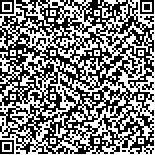下载中心
优秀审稿专家
优秀论文
相关链接
摘要

叶方向(包括叶倾角和方位角)是决定林冠内部及其下层太阳辐射在3维空间分布的重要因素,并进而影响植被的光合作用效率和林冠的二向性反射特性.本文利用地面激光雷达扫描系统(TLS)对一棵人工阔叶树在水平圆形轨道设置等间距6站进行扫描,获取其完整覆盖的3维点云数据.在手动选取78片点云完整叶片数据的基础上,通过重建单点在其邻域内的法向量和所在叶片主轴方向分别得到了叶的倾角和方位角分布,将构成每片叶子的所有点的倾角和方位角各自均值作为其倾角和方位角.通过与利用角度尺和罗盘进行逐叶片手动测量结果对比发现:基于TLS计算的叶倾角和方位角与手动测量结果均具有较强的相关性,R2分别为0.88(N=209,p <0.0011)和0.97(N=78,p <0.0011).本文方法能准确获取林冠元素的3维空间分布,为估算森林冠层在任意给定光照条件下的消光系数提供了理论基础,为促进地面激光雷达在植被冠层3维结构参数,特别是叶面积指数的反演起到了积极作用.
Leaf orientation (including inclination and azimuthal angle) distribution of forest canopy determines the internal and below-canopy solar radiation regimes and influences the efficiency of forest photosynthesis and the characteristics of canopy bidirectional reflectance. This study develops a method to retrieve leaf orientation distribution of an artificial tree by combining Terrestrial Laser Scanning (TLS) data and computational geometry technique and then evaluating the effectiveness of the proposed method. In this study, a manmade broadleaf tree was set up to acquire point cloud data using a terrestrial laser scanner (Leica Scanstation 2). We successively placed the terrestrial laser scanner at six different locations on a circle with an azimuthal angle interval of 60° to acquire comprehensive point cloud data of the artificial tree. The different point cloud datasets obtained from different scan locations were registered into a common coordinate system. Point data of 78 comprehensive leaves were manually selected to validate the proposed method. Inclination angle of points was obtained through reconstructing the normal vector of a point within a certain neighbor region with six points. We then computed the azimuthal angle of points by finding the direction of the principal axis of the leaf where the point belonged to. Computer-based results were compared with manual-based measurements to evaluate the proposed method. The inclination and azimuthal angles of each leaf can be computed by averaging the inclination and azimuthal angles of points belonging to the leaf. The inclination angles of wrinkling leaves were measured separately for two to three subsections by assuming that the surface of each subsection was nearly plane. Therefore, for inclination angle, a subsection was regarded as a single leaf. The histogram of the computing results accurately reflected actual leaf orientation distribution. Leaf inclination angles mainly distributed from 40° to 90°, and azimuthal angles mainly peaked within the range of 80° to 160° and 280° to 320°, which were similar to the manual results. In terms of single-leaf comparison, for leaf inclination angle, R2 was 0.88 (N=209, p <0.0011); for leaf azimuthal angle, R2 was 0.97 (N=78, p <0.0011). However, inclination angles were overestimated for the range of 0° to 50° and underestimated for the range of 70° to 90°. An effective method for the accurate retrieval of leaf orientation distribution from TLS data was proposed. This method provides a theoretical foundation and approach for accurately obtaining canopy three-dimensional spatial distribution, consequently improving the estimates of extinction coefficient and leaf area index. However, the method has not been applied to all tree species. The inclination angle computation works well for broadleaf species, and the azimuthal angle computation is suitable for broadleaf species with a leaf length usually longer than the corresponding width. Meanwhile, computation for azimuthal angle is under the assumption that a leaf principally points to below the horizontal plane. Considerable research about inclination and azimuthal angle distribution of other tree species remains to be explored.

